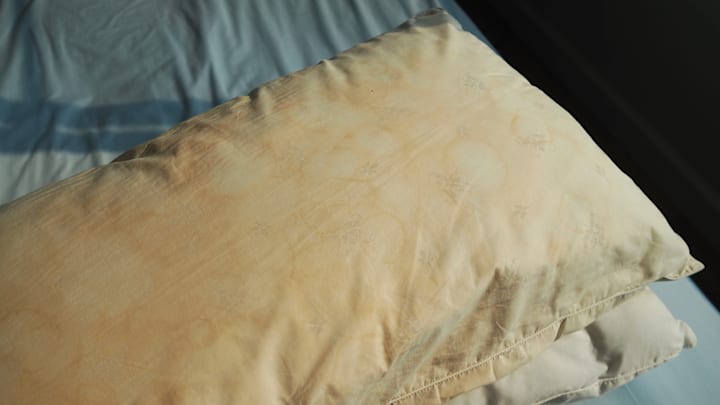Your pillow makes contact with your face for six to eight hours each night, so you should hold it to a higher standard of hygiene than most household items. Changing your pillowcases once a week may not be cutting it. Even with a layer of protection, the pillow itself can get yellowed over time. If visions of the horribly discolored cushion beneath your head have been keeping you up at night, it's time to give your pillow a deep clean.
According to Lifehacker, yellow streaks on once-white pillows are more common than we'd like to believe. As we sleep, bodily fluids—like sweat, hair oils, and drool—seep through our cases and into pillows. Your evening skincare routine is another likely culprit. When you slather your face with lotion before going to bed, some of that product is likely to rub off on your pillow. Gradually, all of these substances accumulate and dry to form unsightly stains.
Unfortunately, a piece of fabric is the only thing separating your face from a year's worth of old sweat. The good news is that washing out the built-up gunk is fairly easy to do. Start by checking the tag on your pillow for cleaning instructions. If the tag says to toss the pillow in the machine, add in half a cup of bleach and half a cup of borax along with your regular detergent. This will help remove any stubborn discoloration. Continue washing and drying the item per the tag's specifications. For pillows that require spot washing, try tackling stains with a baking soda solution or commercial stain-removal products.
Even if your pillow looks as clean as it did the day you bought it, you should still be washing it at least a few times a year. Hair, fluids, and dead skin cells all make their way into the material whether you can see them or not. The same goes for the mattress you sleep on every night, but this cleaning job isn't as simple as turning on your washing machine. Here are some tips for cleaning your mattress safely.
[h/t Lifehacker]
